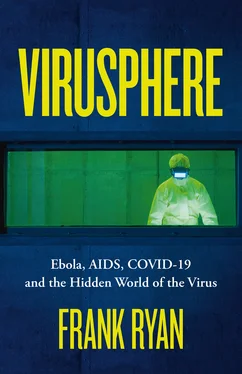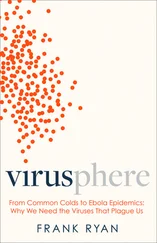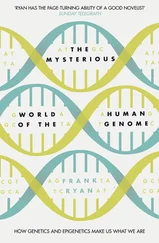We are somewhat inclined to see all microbes as potential pathogens. But outside the medical world, microbiologists have long been aware that microbes play much wider roles in nature. For example, the bacteria in soil are essential to the normal cycles of life, helping to break down organic matter to its elemental components, which are then made available for recycling to supply the basic requirements of other living beings. So essential are these soil bacteria that if they were to disappear, the vast majority of life on Earth would follow their example. Such living interdependency is known as symbiosis. We humans are apt to confuse symbiosis with notions of ‘friendliness’ or ‘togetherness’, thereby grafting human attributes onto situations where such human notions do not apply. Perhaps it might be a good idea to clarify what the concept of symbiosis actually means to the biological sciences.
Bugs, such as bacteria and viruses, do not think. No more do they have feelings. Their behaviour among themselves, and in relation to their hosts, is driven by a mixture of happenstance and the fundamental mechanisms of evolution. Symbiosis is not about Mr Friendly Guy who shakes the hand of Ms Friendly Lady and everything is hunky-dory from then on. It is about survival in what Darwin called ‘the struggle for existence’. In 1878 a professor of botany in Berlin, called Anton de Bary, defined symbiosis as ‘the living together of differently named organisms’. A modern interpretation might rephrase his definition as ‘living interactions between different species of organisms’. The interacting partner species are called ‘symbionts’ and the interaction as a whole is called the ‘holobiont’.
While symbiosis includes parasitism, which is defined as a symbiotic interaction in which one or more of the partners benefits from the partnership at the expense of another, symbiosis also includes commensalism, where one or more partners gains without detriment to the others; and it also includes mutualism, where two or more of the interacting partners gain from the partnership without harm to the other partner, or partners. It is important to grasp that mutualism often begins as parasitism – indeed in nature many relationships involve situations somewhere between the extremes of parasitism and mutualism. This broader umbrella of living interactions offers the necessary scope for understanding the enormous variety of living interactions, involving microbes and their hosts, in nature. It allows us to compare and contrast a bacterium, E. coli , with a virus that also has a predilection for the human gut: the so-called winter vomiting bug, known as the norovirus.
The norovirus is the commonest cause of gastroenteritis in the world, familiar to most of us with its unpleasant manifestations of diarrhoea, vomiting and stomach cramps. It is extremely contagious by the faecal-oral route, whether through contaminated food or water, or direct contact contamination from another sufferer. Once again, we humans appear to be the only host. This, in turn, means that we are the natural reservoir in nature of the virus. Symptoms usually develop some 12 to 48 hours after exposure to infection, often with a low fever and headache. The gut irritation is rarely severe enough to provoke the bloody diarrhoea that is sometimes seen in dysentery, and recovery usually follows within a few days. Since the condition is usually self-limiting, diagnosis tends to be made on the basis of symptoms alone, especially when it occurs during a local recognised outbreak. No specific treatment is usually necessary, although sufferers may be helped by increasing fluid intake to avoid dehydration, together with non-specific anti-fever and anti-diarrhoeal medication. Laboratory confirmation is not usually necessary although public health authorities may sometimes make use of it for contact tracing purposes.
Prevention is the judicious policy, through careful hand-washing and disinfection of potentially contaminated surfaces. Unfortunately, alcohol-based hand sanitisers of the sort dispensed in hospitals are, reportedly, ineffective.
Noroviruses comprise a genus within the family of calciviruses, so-called because they have cup-like depressions in their capsids and so were named after the Greek word calyx , which means a cup or goblet. Since they cannot currently be cultured in the usual laboratory media, the single species is divided into six genetically distinct ‘genogroups’, which infect mice, cows, pigs and humans. The human genotypes are extremely infectious even from minute numbers of the virus, so much so that it has been calculated that a single tablespoonful of diarrhoeal effluent from an infected individual would contain enough viruses to infect everyone in the world many times over. But this is no cause for alarm. Thankfully there is rather more to infectious spread than such theoretical extrapolations. A more practical consideration is the fact that affected individuals can remain infectious for several days after the symptoms have settled. This means that they might feel well enough to return to normal life, including work premises, when they are still capable of passing on the virus. It might also contribute to the tendency for outbreaks to occur in closed communities, such as hospitals, cruise ships, schools and residential care homes, where communal food preparation, and common dining areas, make transmission of the virus more likely. Readers may be surprised to learn that, in spite of the relatively mild nature of the illness, the ease of transmission, combined with the prostration of the vomiting and diarrhoea, has led to the norovirus being classed as a Category B bio-warfare agent.
Globally it is estimated that norovirus infects some 685 million people a year, most of whom go on to make a full and speedy recovery. Unfortunately, in a small minority, it can result in a life-threatening illness, with some 200,000 or so deaths worldwide each year. Children under the age of five years are most susceptible, especially in developing countries, where it causes as many as 50,000 paediatric deaths annually. It is worrying that the number of reported outbreaks has been rising since 2002, warning health authorities, if they weren’t sufficiently alarmed already, that we need to treat the norovirus as a dangerous ‘emerging infection’, and one that may be evolving even more highly infectious strains.
The causative virus is globular in shape and between 20 and 40 nanometres in diameter. This means that the norovirus is somewhere between a hundredth and a fiftieth the size of the E. coli bacterium. Viruses lack the enclosing cell wall seen in bacterial, or indeed human, cells. But under the powerful magnification of the electron microscope we see that the norovirus possesses an icosahedral capsid, which encloses and protects the viral RNA-based genome. E. coli , like all bacteria, and indeed all cellular forms of life, has a DNA-based genome.
If we compare and contrast the bacterial and viral genomes, we come across gargantuan differences between bacteria and viruses at every level of their structure and organisation. The E. coli genome is coiled into a single, very lengthy circle of DNA that is attached to the inner aspect of the bacterial cell wall at a single point. This bacterial genome contains roughly 4,288 protein-coding genes, as well as coding sequences for other key metabolic functions involved with the handling of gene expression. This is comprehensive enough for the bacterium to store the memory of its genetic heredity as well as to allow it to carry out numerous internal metabolic functions involved in its internal physiology and biochemistry. One such key function is the control of the processes involved in its budding pattern of reproduction, to produce daughter bacteria.
Читать дальше












